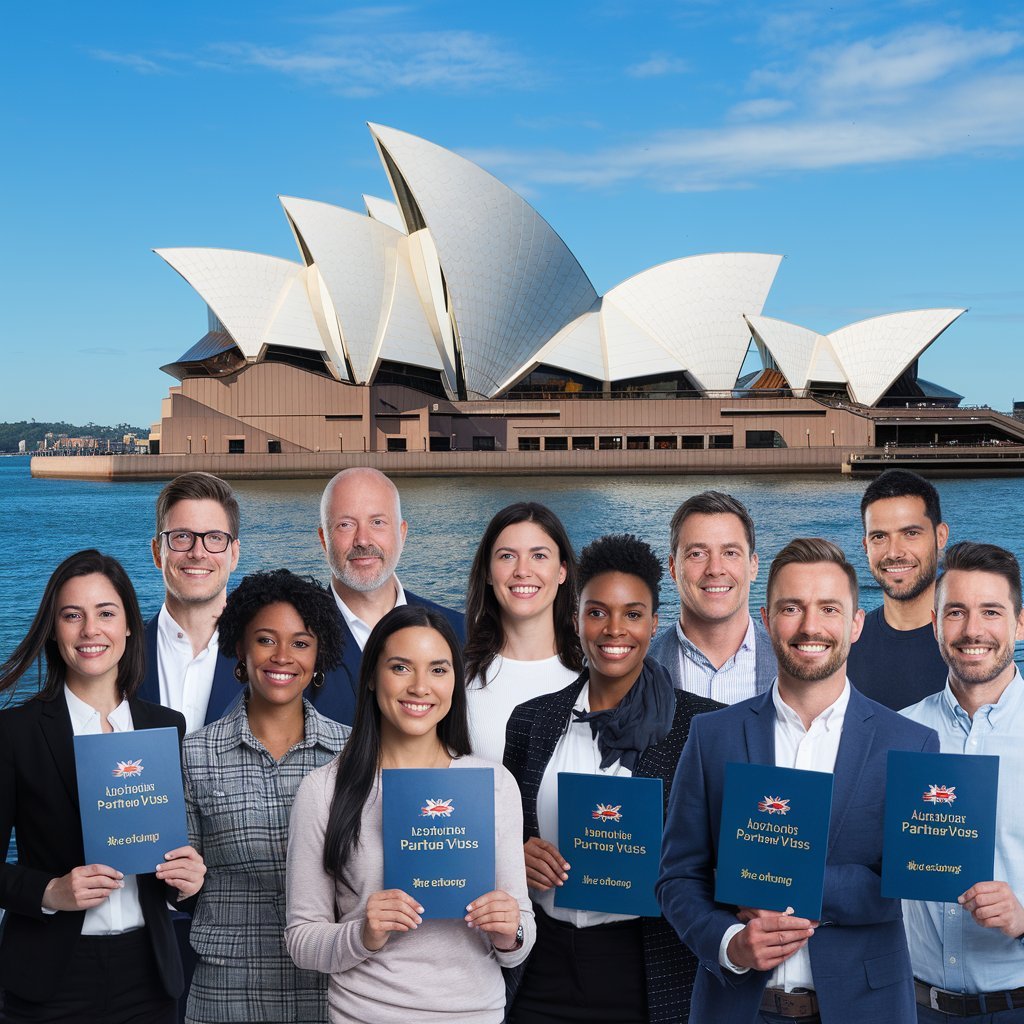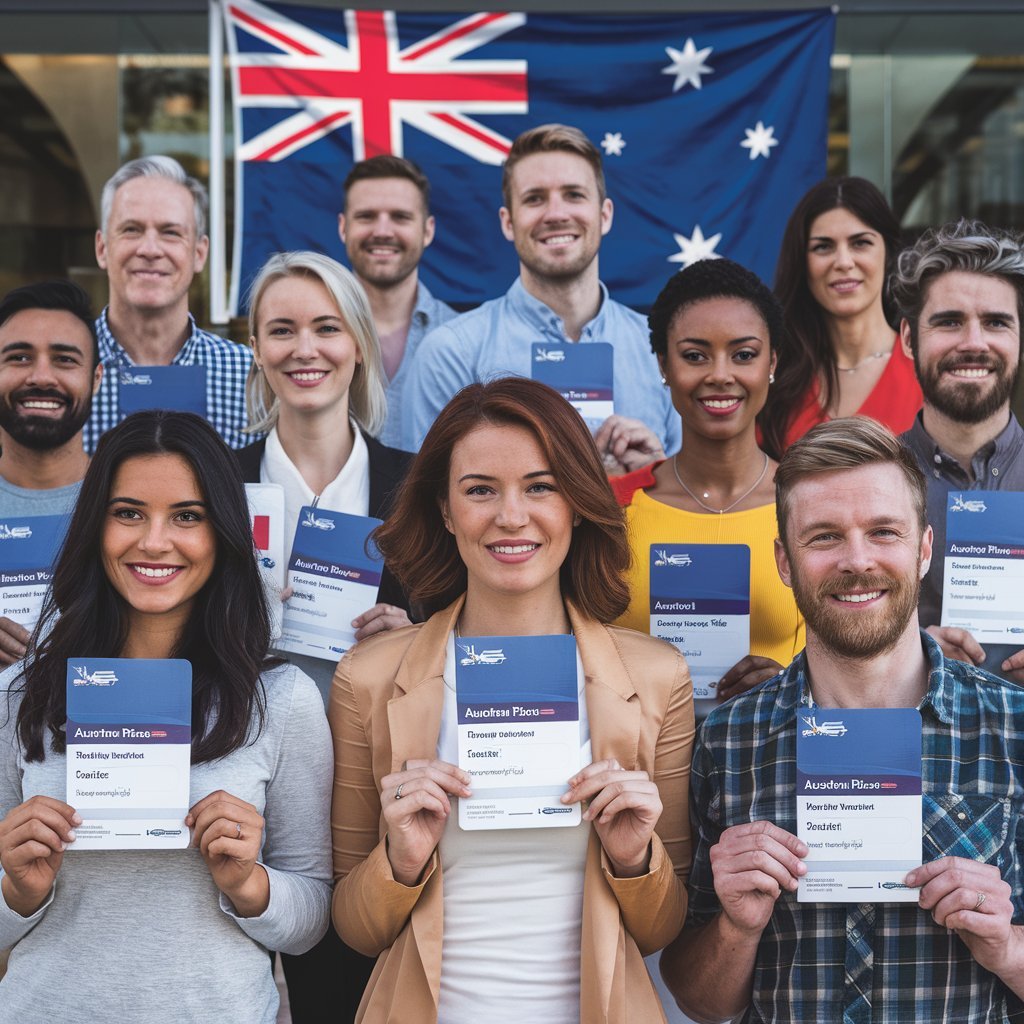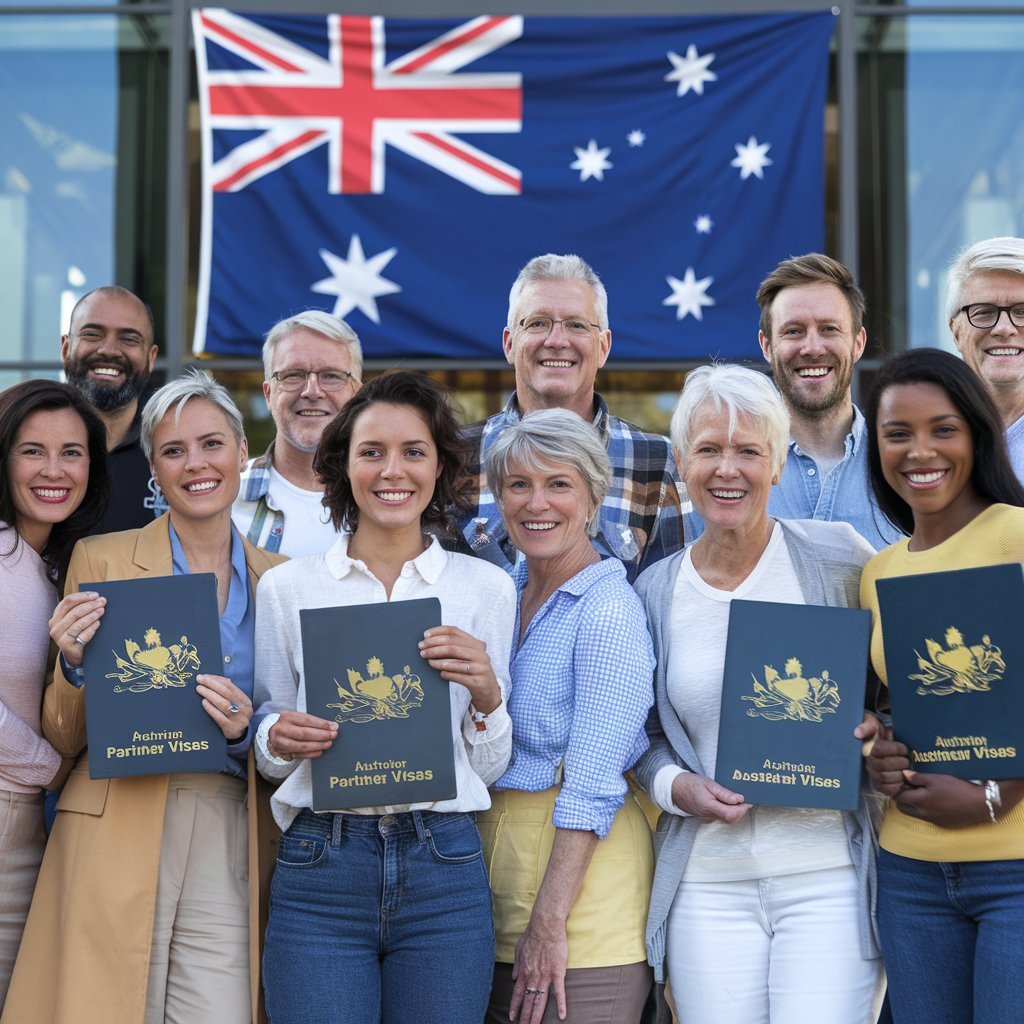Subclass 309 vs. 820| A Guide to Australian Partner Visas
Do you want to settle with your partner in Australia? Know a detailed comparison of the Australian subclass 309 vs. 820 visas. Here is the complete guide to partner visas.
This guide will answer all your questions related to partner visas:
- What are subclass 309 and 820 partner visas?
- What are the key requirements of partner visas?
- How can the subclass 309 and 820 lead to permanent residency?
- What is the visa application process?
- How much time will it take for application processing?
So, let’s get started with the in-depth overview of the subclass 309 and 820 partner visas.

Overview: Subclass 309 vs. 820
Everyone wants their partner to be with them. So, the Australian government has a good range of partner visas. These visas include temporary and permanent visas. However, only specific people can apply for these partner visas. This article has a complete, detailed guide to partner visas of subclass 309 vs. 820.
Subclass 309 is a temporary visa type that is especially for people who live outside Australia. Thus, people apply for this visa along with the application for a permanent visa. Thus, the applicant must fall into any of the following categories:
- Spouse of an Australian citizen
- Eligible New Zealand citizens
- Permanent resident of Australia
In contrast, Subclass 820 is another temporary visa option. Thus, this visa is open to people who are already in Australia. So, this temporary visa allows the person to stay until the time of decision for a permanent visa. The applicant must be married to any of the following categories:
- An Australian citizen
- Eligible New Zealand citizens
- Permanent resident of Australia
Key Differences: Subclass 309 vs. 820 visas
1. Visa type and nature
Subclass 309 allows the person to stay on a temporary basis in Australia after getting the visa. However, this is a temporary solution for keeping the partner in Australia till the permanent visa (Subclass 100) is processed.
In contrast, subclass 820 also belongs to the temporary visa types. Thus, the visa holder will live in Australia for a shorter period. During this waiting period, the subclass 801 permanent partner visa will be processed.
2. Requirements of subclass 309 and 820: Location
If you are present outside Australia, you can easily apply for a partner visa subclass 309. On the other hand, the temporary visa subclass 820 has different requirements.
For example, if you are present within Australia, you are eligible for subclass 820.
3. Processing Time
Subclass 309 can generally take up to 16 months to process the majority of visa applications. But this time, it may get longer when someone doesn’t provide the complete documents. So, if there are any missing documents or incomplete provided information, the processing time may become 22 months. According to current data reports, the Australian subclass 309 visa processing time is between four to six months.
On the other hand, a Subclass 820 visa takes a bit longer to process the visa application. The current data reports showed that the processing time of subclass 820 lies between 23 to 27 months. The processing time has changed compared to last year, which may have taken 6 to 37 months.
Moreover, it may take longer or shorter based on the conditions of each person.
4. Financial Sponsorship and Relationship Evidence
There are the following important requirements for partner visas:
- You must have a genuine relationship (married) with the Australian citizen, permanent resident, or New Zealand citizen.
- Your partner must also sponsor you financially, like showing enough money to support you in Australia.
- There is a need for two years of sponsorship, which will eventually lead to a permanent partner visa (subclass 100 or subclass 801)
- Proof or evidence of your relationship with your partner must be provided.
- You and your partner must be over 18 years old.
- Financial proofs and police certificates.
5. Rights to Travel outside Australia: Subclass 309 vs. 820
When the person gets a temporary or permanent partner visa, the government provides some travel rights. So, the temporary visa holders of subclass 309 and 820 have the right to travel within and outside Australia.
However, once the visa expires, they can’t travel or enter Australia. So, first, renewel or another valid Australian visa is needed.
On the other hand, subclass 100 and 801 visa holders have different travel rights. For example, they can travel outside Australia anytime. Also, they can re-enter Australia anytime without any problem. However, this travel facility is valid for five years after one gets a permanent visa.
Therefore, after five years, the visa holder can’t reenter Australia smoothly. So, they need to apply for a Resident Return Visa (RRV). This visa will help them regain their re-entry travel rights in Australia.
6. Exemption from International Travel Restriction
One advantage of partner visas is the exemption from the International travel restriction list. So, basically, Australia has restricted many citizens during COVID-19, and there are also many travel bans.
Thus, these visa holders can travel and re-enter Australia without travel restrictions. Because they automatically get eliminated from the international travel restriction list.
7. Health and Character Requirements
There are the following health requirements for the subclass 309 and 801 partner visa:
- Health certificate of general medical examination.
- Chest x-ray.
- Blood test reports.
- Additional medical tests based on your medical history.
- Enrollment in Australia’s scheme related to health care and expenses.
8. Pathway to Permanent Residency: Subclass 309 vs. 820
In Australia, getting temporary visas will make your dream of PR come true.
So, the applicant needs to apply for subclass 309 and 100 at the same time. This way, becoming the subclass 309 visa holder, he will wait for the next two years. So, after two years, he will get the approval for a permanent subclass 100 visa.
Moreover, subclass 820 and 801 are applied at the same time. Thus, the applicant will get the temporary subclass 820 partner visa first. Then, after a minimum of two years, the applicant will be eligible for the subclass 801 visa.
Therefore, temporary partner visas are the best pathway toward permanent residency. In subclass 309 vs. 820, the procedure and requirement for PR are the same.
Electronic Travel Authority (ETA) Visa: A Temporary Solution for Partners
Some partners are looking for ways to connect in Australia because their partner visa processing is slow. Hence, many people choose temporary solutions. ETA (Electronic Travel Authority) gives you the chance to spend time together.
ETA has an electronic visa that is associated with traveler’s passports. Therefore, travelers who have ETA visas don’t need any physical form of visa.
ETA visa is a type of short-term visitor visa for tourists and businessmen. In Australia, ETA visa holders can live up to 90 days or less. So, this time is enough till the subclass 309 or 820 visas get processed. In addition, the ETA visa allows multiple visits, which includes 90 days per entry.
Thus, hurry up and fill out the form on the website for the ETA visa and reunite with the partner during the waiting period.
Application process
- Check the Eligibility criteria of subclass partner visas to see if you are eligible for the application or not.
- Collect all the important documents such as marriage certificates, passports, etc.
- Complete the application form and upload all the important documents online.
- Pay the Application Fee according to the visa type. However, the fees are the same for subclass 309 and 820, which is AUD 9,095.
- Wait for the visa decision, and after the visa is processed, you’ll receive the confirmation email.
- After two years, submit the further documents to get a Permanent Visa (Subclass 100/801)
Ready to get started? Fill out the form on our website today. And get a smooth visa processing experience.
Final verdict
Subclass 309 vs. 820 visas is a debate till the applicant has any idea about the visa requirements. This article has given deep insight into the temporary partner visas subclass 309 and 820. So, if someone is applying from outside Australia, subclass 309 is the best option. Also, this visa will eventually lead to the permanent subclass 100 visa. However, if the applicant is present outside Australia, subclass 820 will be open for him.
So, the visa type depends upon your conditions. Fill out the form for the desired visa from our website. And pack your bags to meet your partner.

FAQS
Which is better, Subclass 820 or Subclass 309?
Both visas have different purposes depending upon different conditions. So, subclass 820 is open for the people already residing in Australia. Meanwhile, subclass 309 is for someone who is not present in Australia. Thus, it all depends upon the person who is applying for a visa.
2. What is a Subclass 820 Bridging Visa?
A Bridging Visa is a temporary visa granted to applicants of the Subclass 820 visa. In addition, these visa holders are already living in Australia, and their current visa may expire before a decision on their 820 application is made. Thus, bridging visa allows the applicant to stay in Australia during the waiting period legally.
3. What is the difference between Subclass 309 and Subclass 820?
The main difference is the location of the applicant. Subclass 309 is for applicants outside Australia at the time of application. Once granted, they can enter Australia and eventually transition to the permanent Subclass 100. Whereas Subclass 820 is for applicants inside Australia when applying. If approved, they stay in Australia and can later apply for a permanent Subclass 801 visa.

Post a Comment